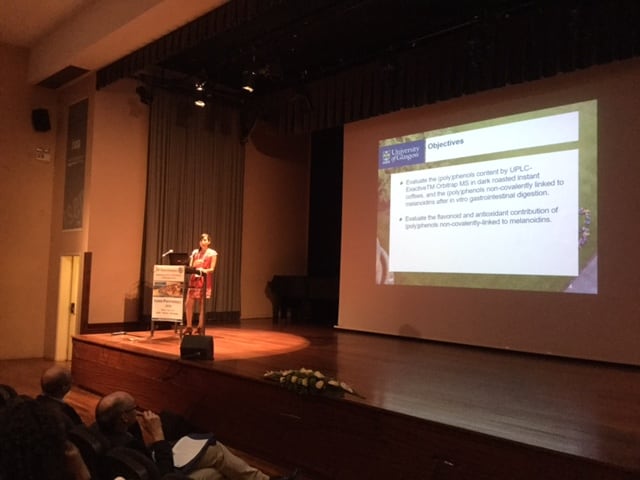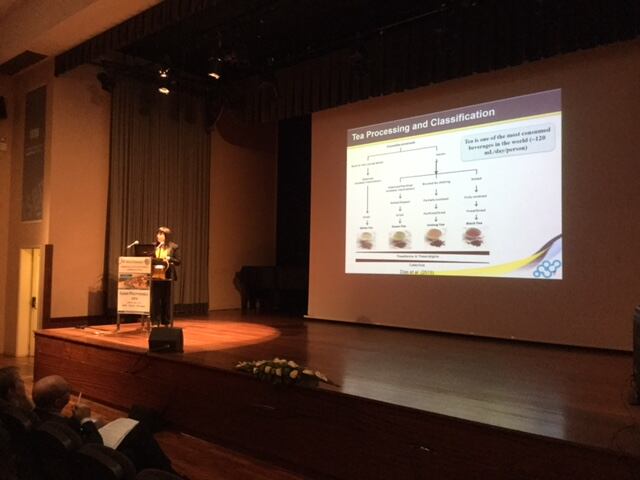These effects have been credited to their antioxidant content. Phenolic compound content has also been implicated as has the formation of melanoidins during the roasting process.
High chlorogenic acid content has also proven to be main contributors to the antioxidant capacity of these drinks.
Presenting at 10th World Congress on Polyphenol Applications, in Porto, Portugal earlier this month, speakers provided data that further delves into the mechanisms that dietary polyphenols follow in influencing human health.
Giuseppe Grosso, from Jagiellonian University Medical College, Poland kicked off by detailing his research into the association between dietary polyphenol intake and metabolic syndrome (MetS).
The research was interesting as the main polyphenol classes found in coffee and tea, which include flavonoids, phenolic acids, stilbenes, and lignans, have shown biological credibility for the onset of MetS.
The study, which used the Polish arm of the Health, Alcohol and Psychosocial factors In Eastern Europe (HAPIEE) cohort study, concluded that among individual polyphenol classes, phenolic acids and stilbenes were heavily linked with MetS, lignans and stilbenes with waist circumference; phenolic acids with blood pressure and triglycerides and flavonoids with fasting plasma glucose.
While these observations have long been known, the study highlighted the challenge of assessing the absorption and different polyphenol bioactivity.
“We don’t know the polyphenol doses that achieve effects on health (positive or detrimental) because the polyphenol intake is estimated from epidemiological studies,” said Grosso.
“These studies are based on databases and do not take into account metabolism and absorption that can vary greatly across populations due to different gut microbiota.”
Grosso added it was easy to overestimate doses as some foods lose their polyphenol content after cooking.
Equally underestimating doses due to lack of key food sources of polyphenols in the food frequency questionnaire was easy.
“We cannot define intake levels at the moment,” he said.
“What I can say is that average intakes reported in current epidemiological studies vary between 1-2 grams per day.”
The roasting process

Susana Alejandra Palma Durán from the University of Glasgow presented her work that sought to explore polyphenols’ and melanoidins’ antioxidant capacity in roasted instant coffee.
The research provided further insights into the effect roasting has on chlorogenic acid (CGA) content in coffee.
The process remains one of the most under-researched areas of defining content of this polyphenol in beverages, yet roasting times and temperature heavily influence CGA levels, particularly in instant coffee.
CGAs are degraded and/or attached to melanoidins during the roasting process forming simple phenols or lactones. Any of these forms can become part of the melanoidin structure.
Palma Durán explained that during the roasting process the reduction or degradation of chlorogenic acids results in as much as 80% of this polyphenol lost in the process.
“While this can reduce their bioaccesability and bioavailability, their antioxidant capacities are not necessarily reduced,” said Palma Durán.
“Melanoidins still presents antioxidant capacity but it is lower compared to the free polyphenols on coffee.”
The study evaluated the CGA content in dark roasted instant coffees (DRIC), and the polyphenols not strongly attached to melanoidins after gastrointestinal digestion.
Four fractions of DRIC were selected - brewed coffee (BC), ultra-filtrated coffee (FC), digested melanoidins (DM), and digested ultra-filtrated melanoidins (DFM). CGA content in BC ranged from 7.2 to 39.5 mg per g, a value similar to FC.
“In vitro digestion frees polyphenols non-covalently linked,” Palma Durán said. “As such polyphenols were not detected in melanoidins (DM and DFM). This indicated that CGA might not be bioavailable.”
“The high ratio caffeine/CGA (2.62±1.09) confirm that the beans were subjected to roasting conditions which may have led to CGA incorporation into melanoidins.”
Tea polyphenols

Finally, Dr Branca Maria Silva from the University of Beira Interior in Portugal presented research into tea polyphenols as protective agents against neurotoxicity and neurodegeneration.
Her presentation discussed whether tea polyphenols obtained from diet or food supplements constituted an effective low-cost strategy to prevent or treat neurodegeneration and neurotoxicity.
The composition of polyphenols, caffeine and bioactivities of white tea compared to black or green tea is determined by how it is collected and processed.
“White tea is prepared exclusively from tips or leaf buds harvested before being fully opened,” she explained. “Green tea is prepared from mature tea leaves.”
“In white and green tea production, the fresh plant material is quickly steamed in order to prevent the oxidation of flavanols. Black tea is prepared from mature tea leaves but fresh plant material is allowed to fully ferment for about 2 hours, before heating stops oxidation of flavan-3-ols, the main class of tea polyphenols.”
Silva added that during fermentation new phenolic compounds were produced (theaflavins and thearrubigins) that changed the colour and flavour of tea, as well as its chemical profile.
Her research findings demonstrated that white tea consisted of antioxidant, antidiabetic and neuroprotective phytochemicals, such as EGCG, caffeine and L-theanine, in low concentrations.
The conclusions suggested the benefits of consuming white tea were down to the additive or synergistic effects of all those compounds.
“We have already tested the bioactivities of some of those isolated compounds in in vitro studies and the positive effects were lower than in the white tea extract (and, sometimes, the isolated compounds were cytotoxic, in the highest concentrations),” she explained.
“It is probable that white tea is more effective when continuously consumed over the day, as is typically the case with tea drinking, as opposed to receiving it in a single or double dose (pill/tablet form).”
Source: Journal of ISANH (International Society of Antioxidants in Nutrition and Health)
Published online ahead of print, DOI:10.18143/JISANH_v3i4
“Dietary polyphenols are inversely associated with metabolic syndrome in Polish adults of the HAPIEE study.”
Authors: Giuseppe Grosso
“Chlorogenic acids content and melanoidins in dark roasted instant coffees.”
Authors: Susana Alejandra Palma Duran
“Polyphenols as protective agents against neurotoxicity and neurodegeneration: the case of tea polyphenols.”
Authors: Branca Maria Silva
